Affiliate disclosure: This post may contain affiliate links. Please see our Privacy Policy.
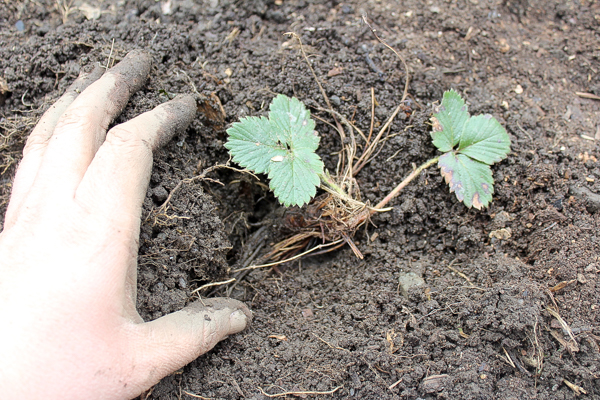
Unlike most perennials that need to be propagated by a nurseryman, strawberries love to self-multiply. Plant a few strawberry plants and they’ll send out runners in every direction. Within a few years, your strawberry bed will be overrun and crowded. It’s time to transplant some of those strawberry babies to new homes and establish a whole new bed.
Strawberry plants produce the best-tasting, high-quality berries when they have enough space and nutrients. Thinning them out annually will help keep the bed producing at its best.
Preparing a Bed for Strawberry Transplants
While I’ve seen strawberries produce tasty fruit under pretty atrocious conditions, they prefer rich soil with a lot of compost and good drainage. Their ideal is a sandy loam.
Strawberries have shallow roots, so they don’t need particularly deep soils. We plant strawberries when we’re first establishing beds.
Our soil is naturally full of clay, so we start with shallow raised beds improved with sand and compost. At the beginning, the beds have shallow soils and they’re perfect for strawberries. After a few years of amendment, we transplant the strawberries out and the beds are ready for other vegetables.
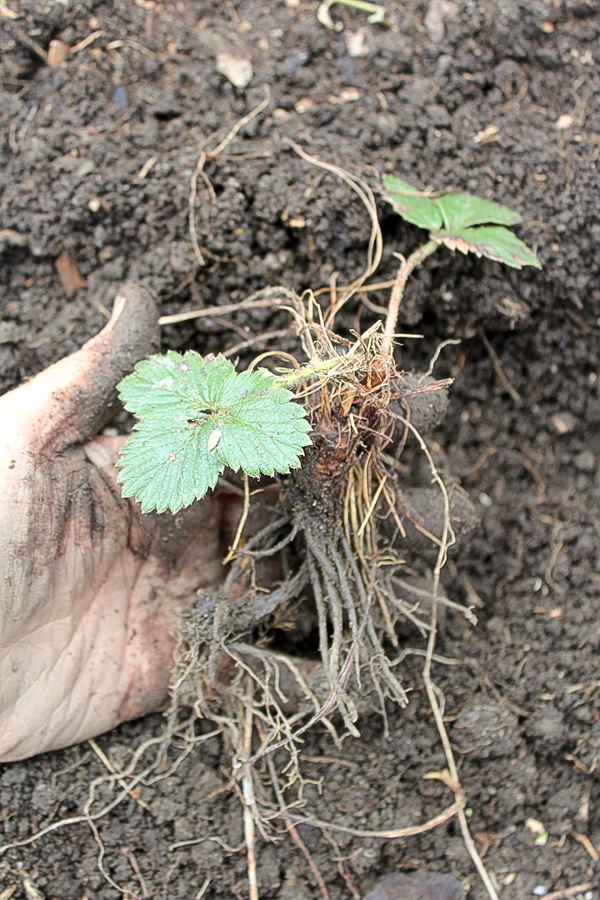
Choosing Strawberries to Transplant
Beyond that, older plants tend to wear out. Strawberries yield best in their 2nd and 3rd year, but by the 4th year, yields start to decrease. Yields also decrease in the 1st year after transplanting because of the disturbance.
When choosing a strawberry plant to transplant, look for first-year runners. They’ll have low yields in their first year, but they’ll be well-positioned to thrive in an uncrowded bed in their most productive 2nd and 3rd years.
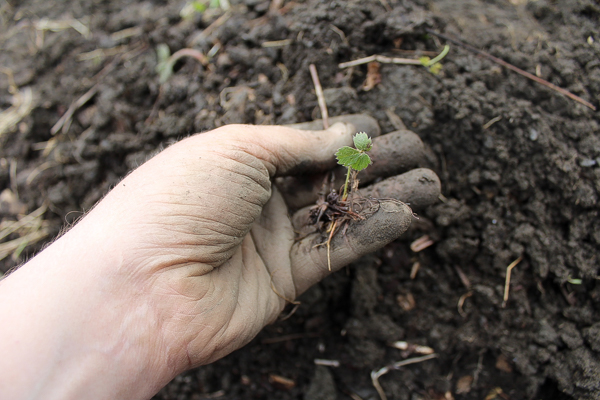
What to do with older plants is a challenge. Their yield has dropped off significantly by the 4th year, and they’re taking up a lot of space crowding out their daughter plants.
There’s part of me that just can stand the thought of throwing them away though. They’ve been producing high-quality fruit to feed my family for years, and casting them aside just doesn’t seem right.
I have a few retirement beds set up for older plants, along the edge of the woods. Wild strawberries naturally grow at woods edges, where they primarily propagate by runners.
These parent plants keep producing runners and produce a modest amount of fruit for occasional picking. They also help feed the bees with their early spring blooms.
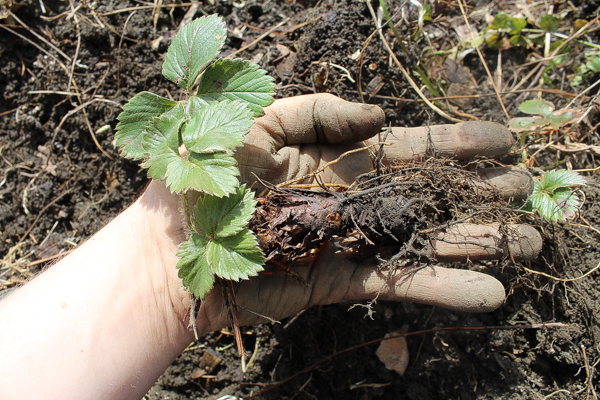
Strawberry Plant Spacing
Since we’re planing strawberries in raised beds, we tend to go for a wide row. A single raised bed has two wide rows with a walking path down the center. In the picture below, I’ve planted a single wide bed of strawberries in a zig-zag row.
The strawberry plants will send out runners and fill in the spaces between them. Using this zigzag pattern and a very wide row, I’m able to plant more plants and get higher yields from the same space than when planting in straight rows.
When planting in straight rows, instructions say to plant the berries 14 to 18 inches apart, in rows 2.5 feet apart. I plant them about 14 inches apart in a wide zig-zag. The center of each wide row is about 3 feet apart, with plenty of space for walking down the center.
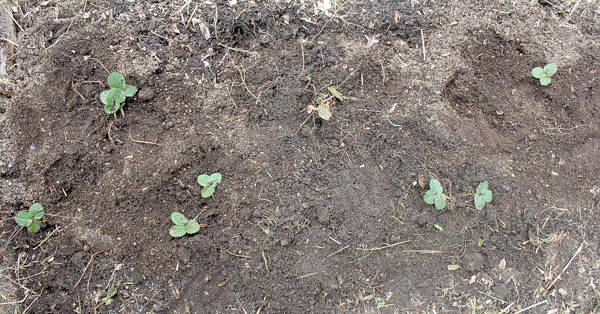
Planting Bare Root Strawberry Plants
In general, I’m not a fan of bare-root plants. Those little guys have been abused and I often have bad luck trying to transplant them. Strawberries are different.
They don’t create elaborate root systems and they can be dug up, stuffed in a bag with now soil and shipped halfway around the world without a care in the world.
Bare-root strawberries are hands down the best way to establish a strawberry bed. All it takes is a few plants, to get started and they’ll self-propagate to hundreds of plants within a year or two.
They’re generally sold in packs of 20 to 25 plants for about $10 to $15 dollars. A single pack is all you’ll need for a lifetime supply of plants unless you want to plant a different variety later. You can buy bare root strawberry plants here.
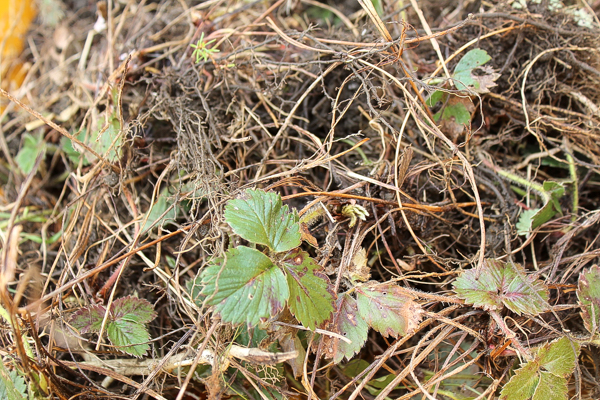
When the bare-root plants arrive, they’ll need to be kept in a cool moist environment until ready for planting. When we buy new plants, we order them to arrive in mid-April up here in Vermont (zone 4). Maple sugaring season has just ended, and days are consistently around 50 degrees.
Warmer locations will want to start them earlier, just as soon as the soil can be worked in the springtime. Whenever you plant your peas in the spring is also the best time to get strawberry plants started.
The bare-root plants will arrive in a tangle of roots and small plant bodies. They’ll likely have a few small leaves starting.
When you’re ready to plant, carefully tease them apart to avoid damaging the plants. At this point, they can be planted in a rich, well-drained bed in the same way as transplanted strawberries.
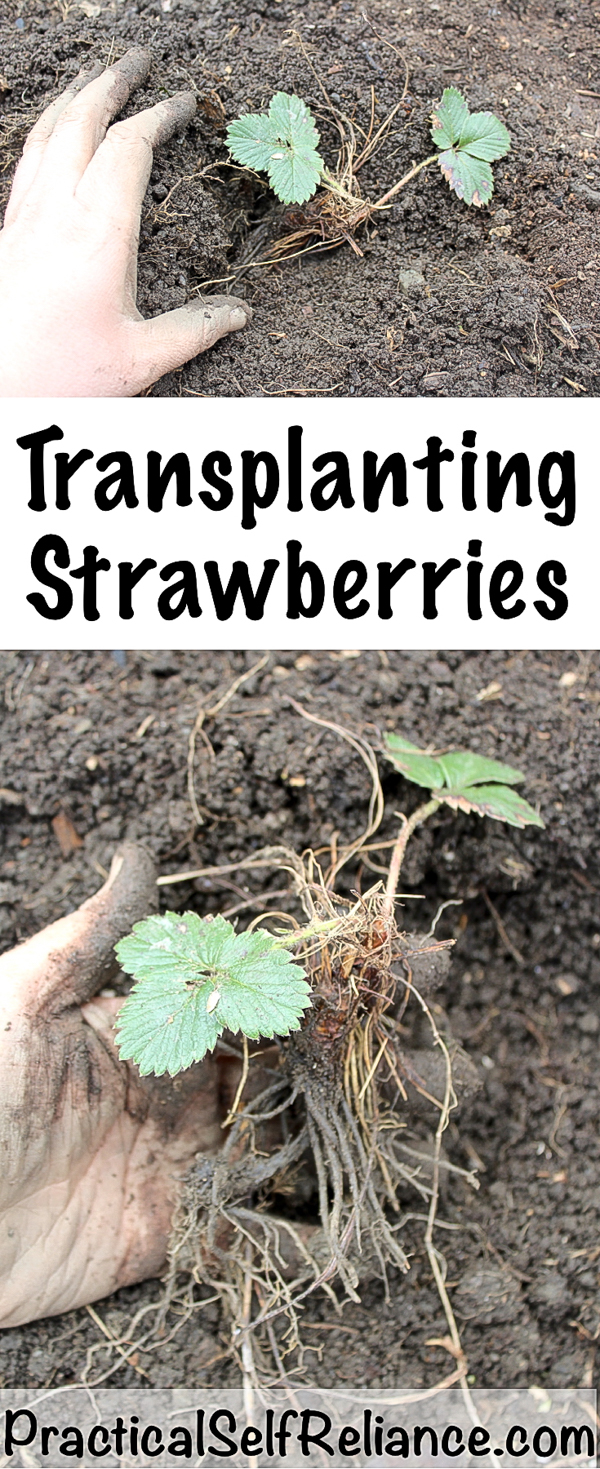
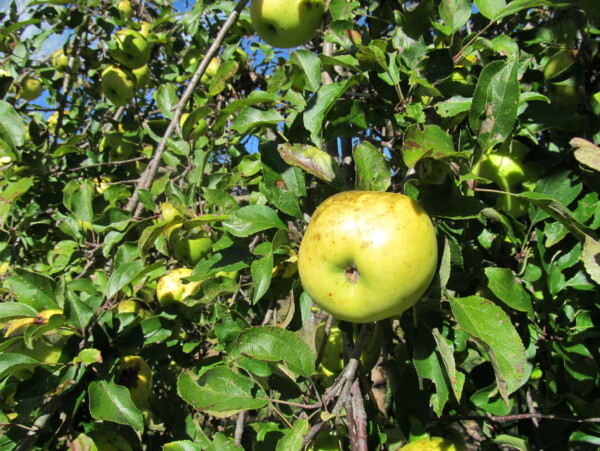



My father in law brought a dozen strawberry plants. I planted them in a tube planter designed to grow them on the fence. On the third day, all of the plants are drooping. Any suggestions?
Those tube planters are a great idea…but they dry out very quickly. They need daily water in those, either rain or by hand.
This is all very useful advice. I live in England and we have had an allotment garden and we inherited some strawberry plants from the previous owners. They are producing and like you said, have no care in the world, even though I was quite rough with them when transplanting them. They are sending out runners already, it is so exciting! 🙂
I live in a northern 4b zone, short growing season. Do you think it would be an advantage to order them early and then Plant the bareroots into compostable peat pots, and then plant those out when weather in ready to try for 2 everbaring crops?
You could certainly try it and see.
We’re getting ready to prep our strawberry area here in a work or so and your article is chock fill of invaluable advice. I love your idea of retiring strawberries too! We have a wonderful wooded area near an irrigation ditch that runs thru our property that might make a great retiree spot in a few years. Thanks again!